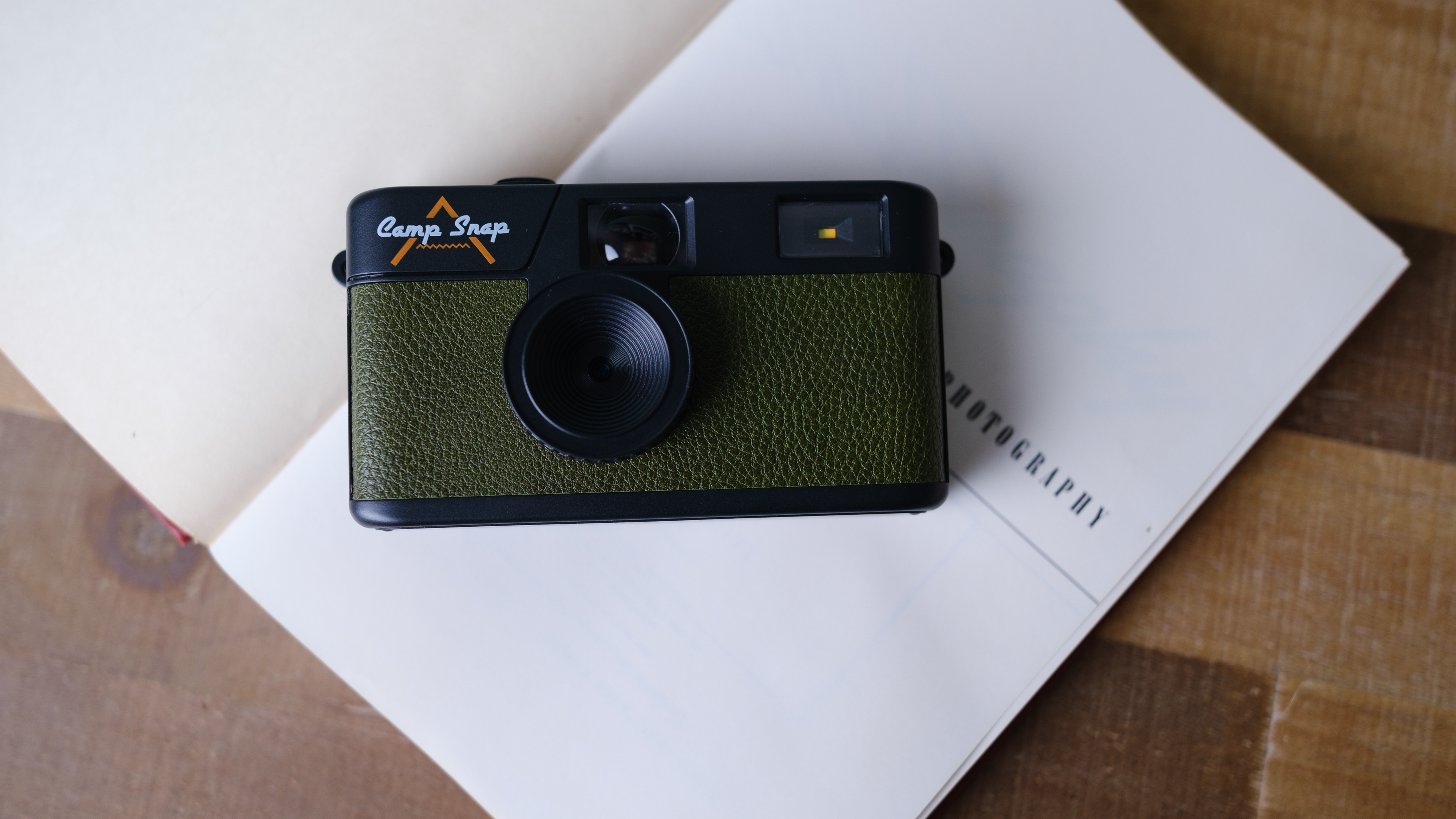Digital Camera World Verdict
A world-beating camera phone the Z Fold 4 is not, but with its polished performance, S Pen support, powerful internals, and refined, durable styling, it's still the best foldable you can buy in the West. If you can get past its high price, the phone's still a Swiss Army Knife for photographers, with an improved camera and that big screen showcasing tools like Lightroom and camera companion apps to perfection.
Pros
- +
Powerful and feature-rich
- +
Expert RAW compatible
- +
S pen support
- +
Water-resistant
Cons
- -
Crease in main display
- -
Hinge gap still prominent
- -
S Pen not included
- -
Screen clings onto fingerprints
Why you can trust Digital Camera World
The Samsung Galaxy Z Fold 3 was the landmark phone that introduced water resistance to foldables, and the Z Fold 4 brings it back, along with a healthy set of upgrades and refinements across the board.
While folding phones are still an indulgent luxury with their high prices, Samsung proved that they could be life-proof, which was a huge feat. Confidence in foldables, and specifically, Samsung foldables, has, as a result, skyrocketed in the last year. In fact, the Galaxy Z Flip 3 was the most successful foldable ever, thanks to its style, relative affordability for a foldable (costing $999 / £949), and some smart BTS K-pop collaborations.
Samsung is the foldable darling in the West, but a peek over into the Chinese smartphone market, and things aren't so cut and dry. Huawei's doing a lot better there than it is here; able to release 5G foldables like the Mate X2, complete with its periscope camera. Look to Vivo, and its Vivo Fold X also has a periscope camera, not to mention under-display fingerprint scanners on the inner and outer screen. Xiaomi isn't letting up on Samsung either; the China-only Xiaomi Mix Fold 2 is the thinnest, lightest foldable, and has a full-sized front display and a Leica co-branded camera system.
But don't sleep on Samsung. The Korean brand may have more competition in China than in Europe or in the US, but none of that competition takes advantage of their phones' big, unfolding screens with pen support, and neither are they water resistant. But is that enough when the phone's starting price is $1,799 / £1,649?
Samsung Galaxy Z Fold 4 design and screen
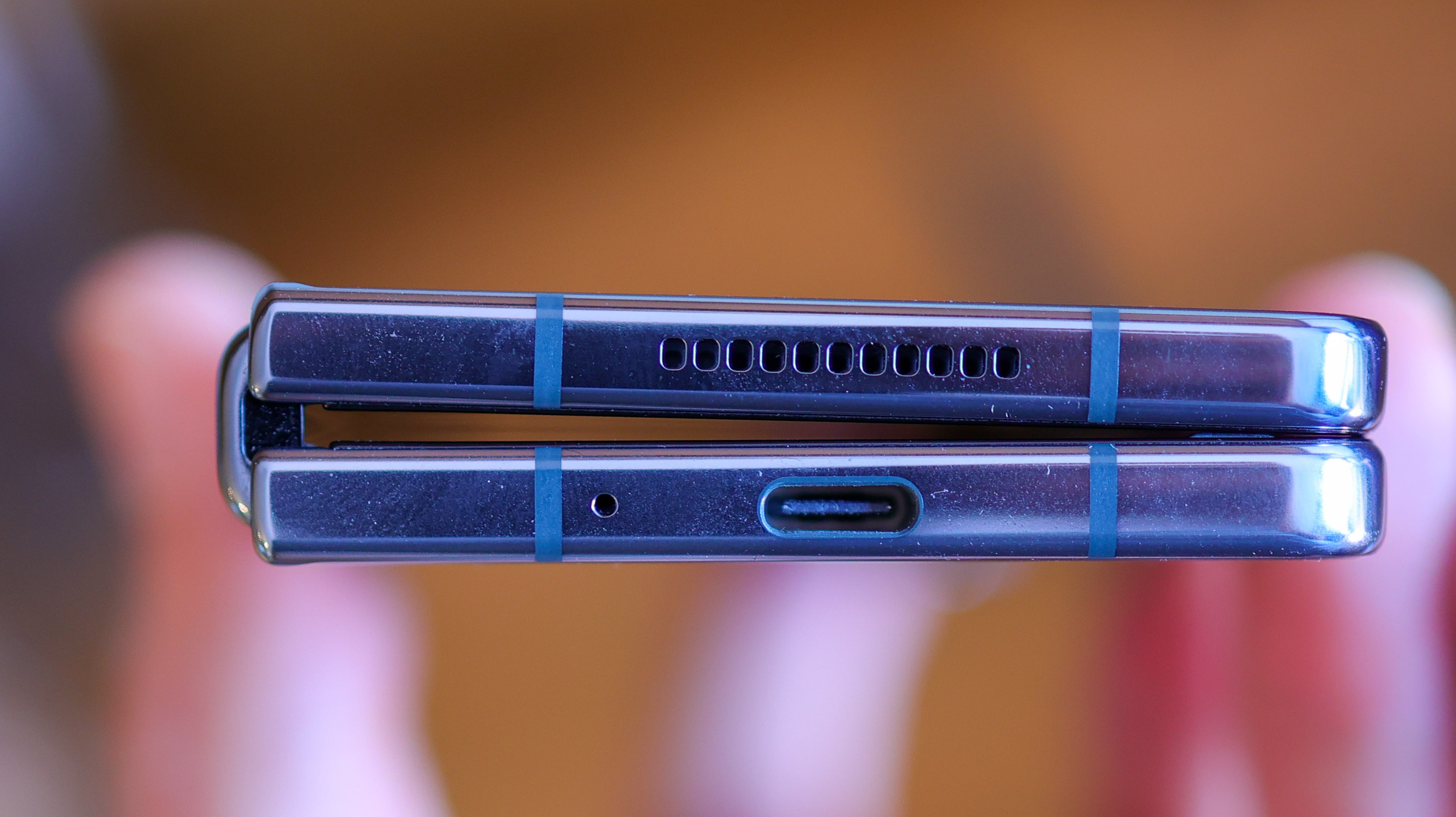
Familiar, but refined – that's where Samsung's going with its new Galaxy Z Fold 4. So if you've ever seen a Z Fold 3, you'll get very real deja vu. By redesigning the hinge mechanism on the new foldable, the cover screen is wider and is framed by less bezel, and the whole phone is lighter than its predecessor.
Getting into specifics, while the Z Fold 3 was 271g, the Z Fold 4 is 263g. When you think that an iPhone 13 Pro Max is 240g, there isn't too much in it. As for the lightest two-in-one foldable in the world, the Xiaomi Mix Fold 2, weighs just 1g less than the Z Fold 4.
So it's relatively light – great, but is the Z Fold 4 really thin? Absolutely, when unfolded. At 6.3mm thin, as a sleek, skinny tablet, it's a waif. Closed, though, it's still a thickums. Shaped like a bit of a wedge, it measures 14.2mm at its thinnest point, and 15.8mm at its thickest. Some phones creep into that territory; the Xiaomi 12s Ultra, for example, with its 1-inch camera sensor is around 13.5mm when you include the camera bump. That said, most phones are much, much thinner – under 10mm.
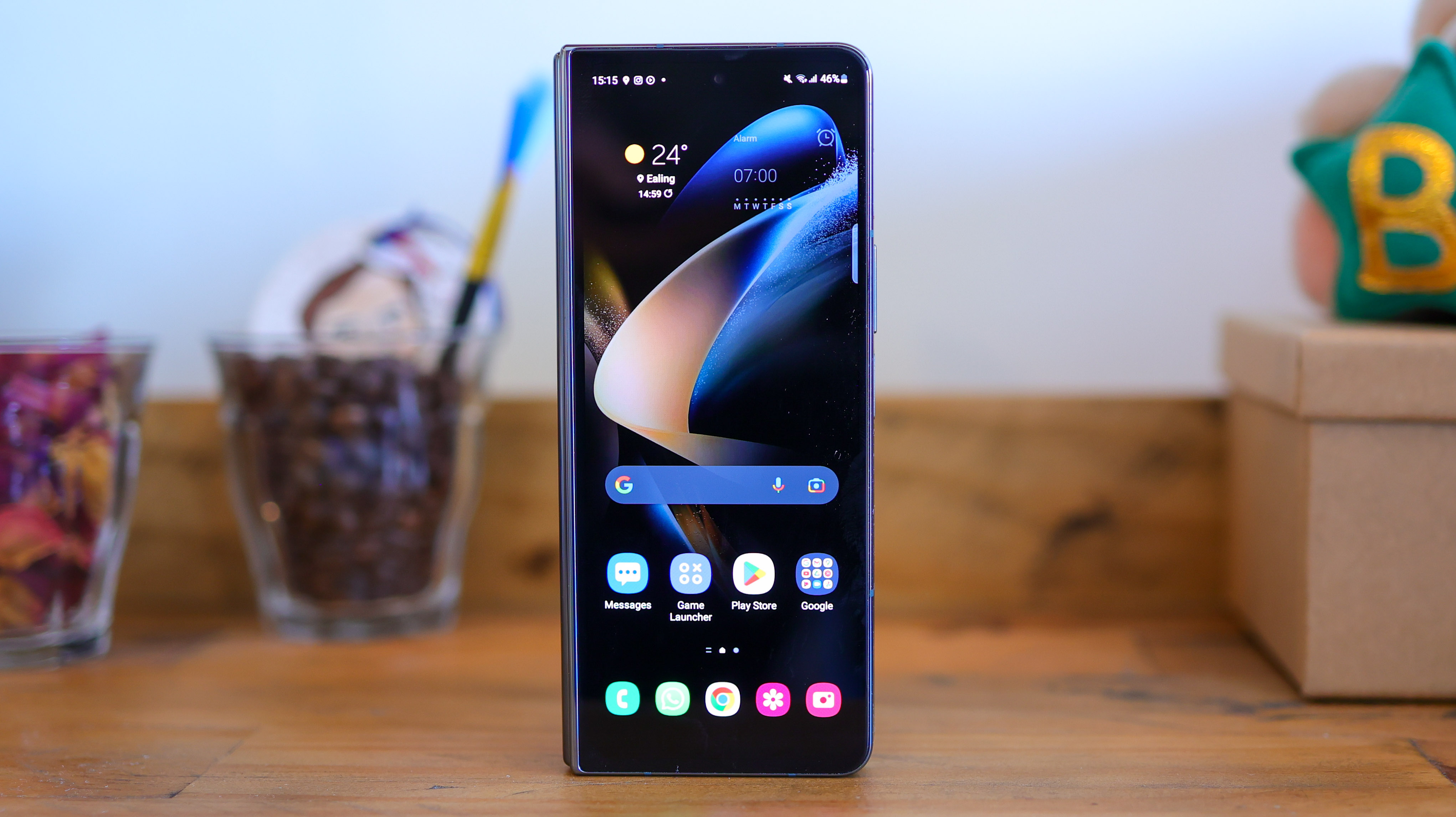
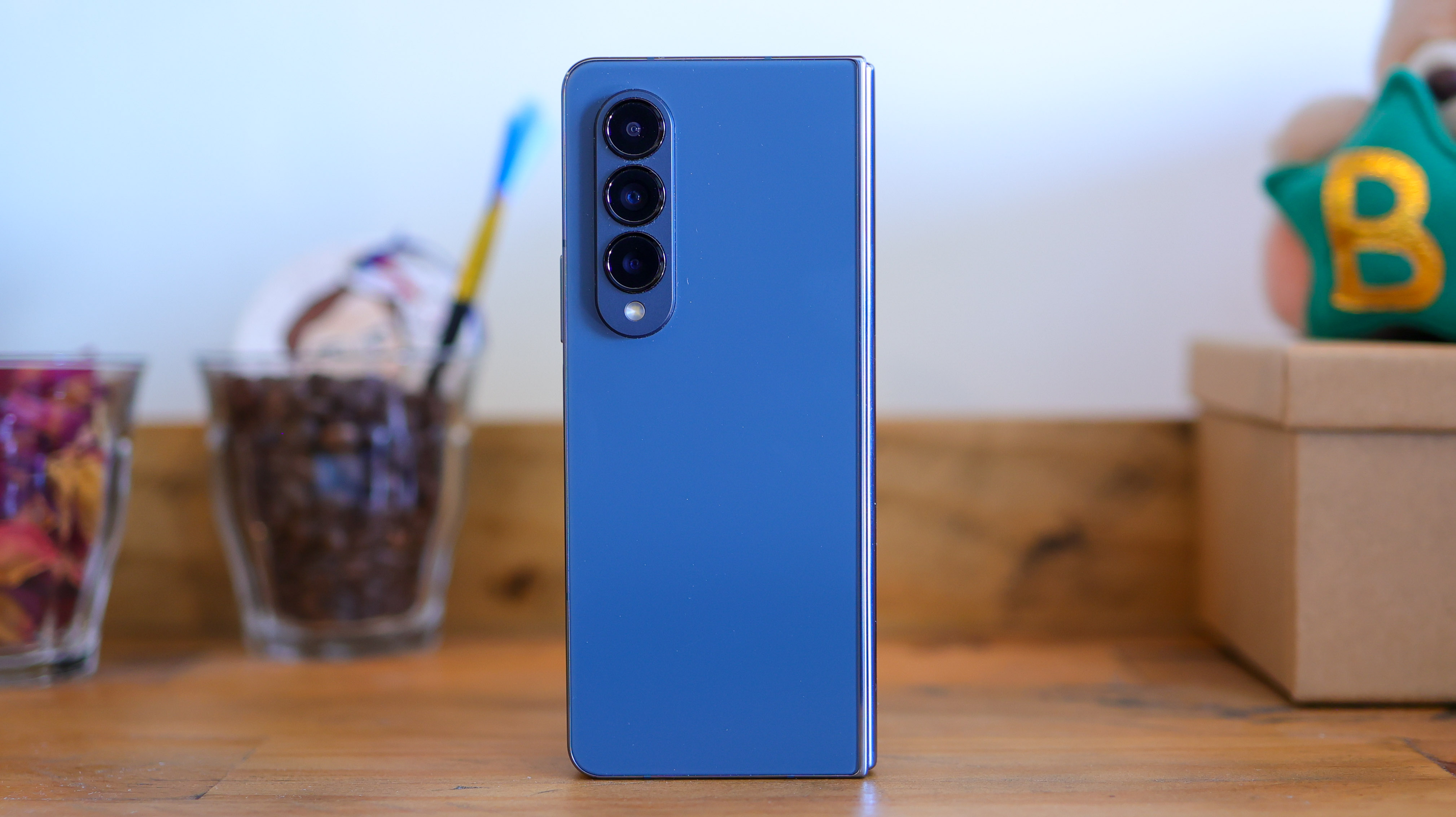
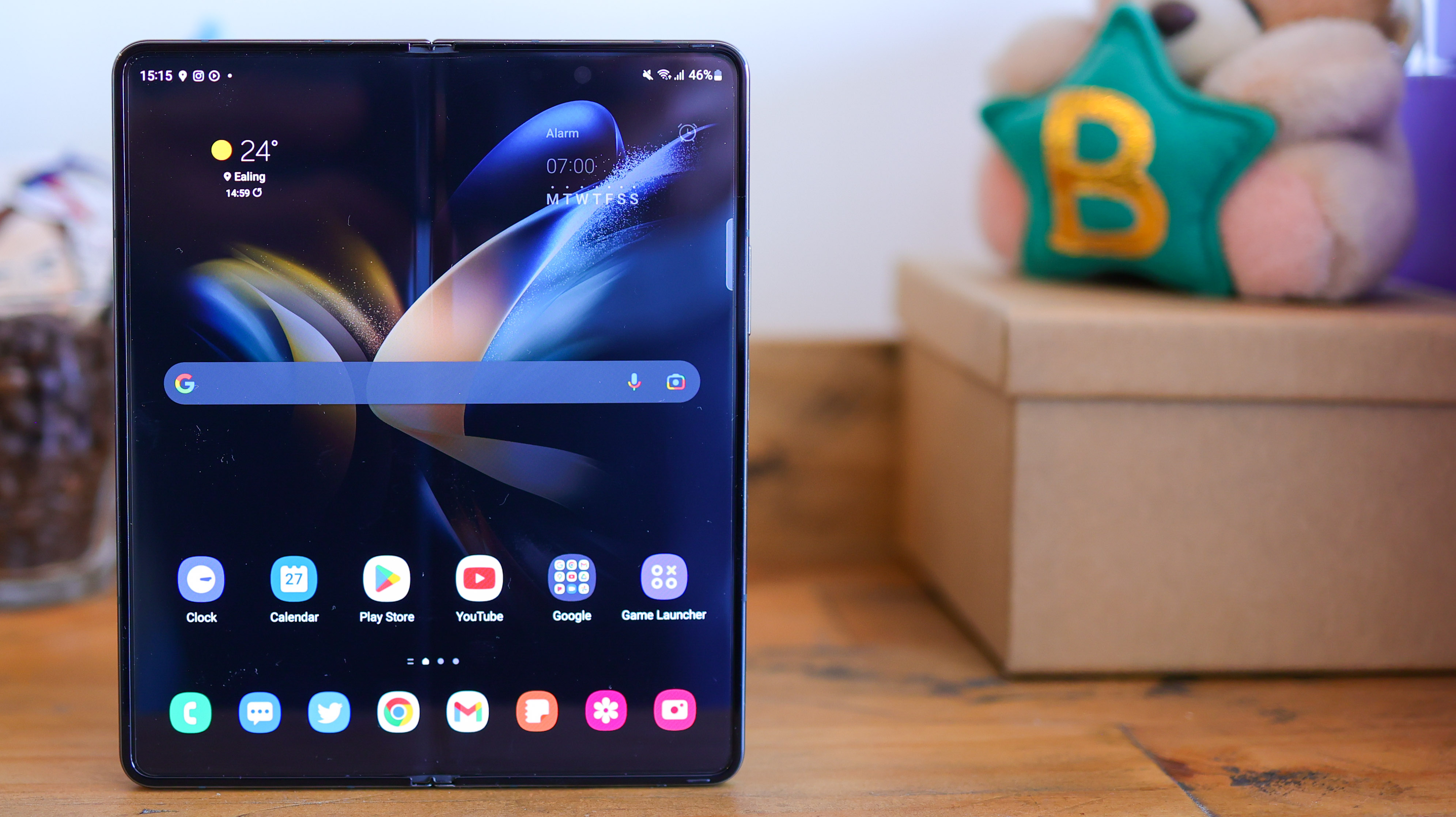
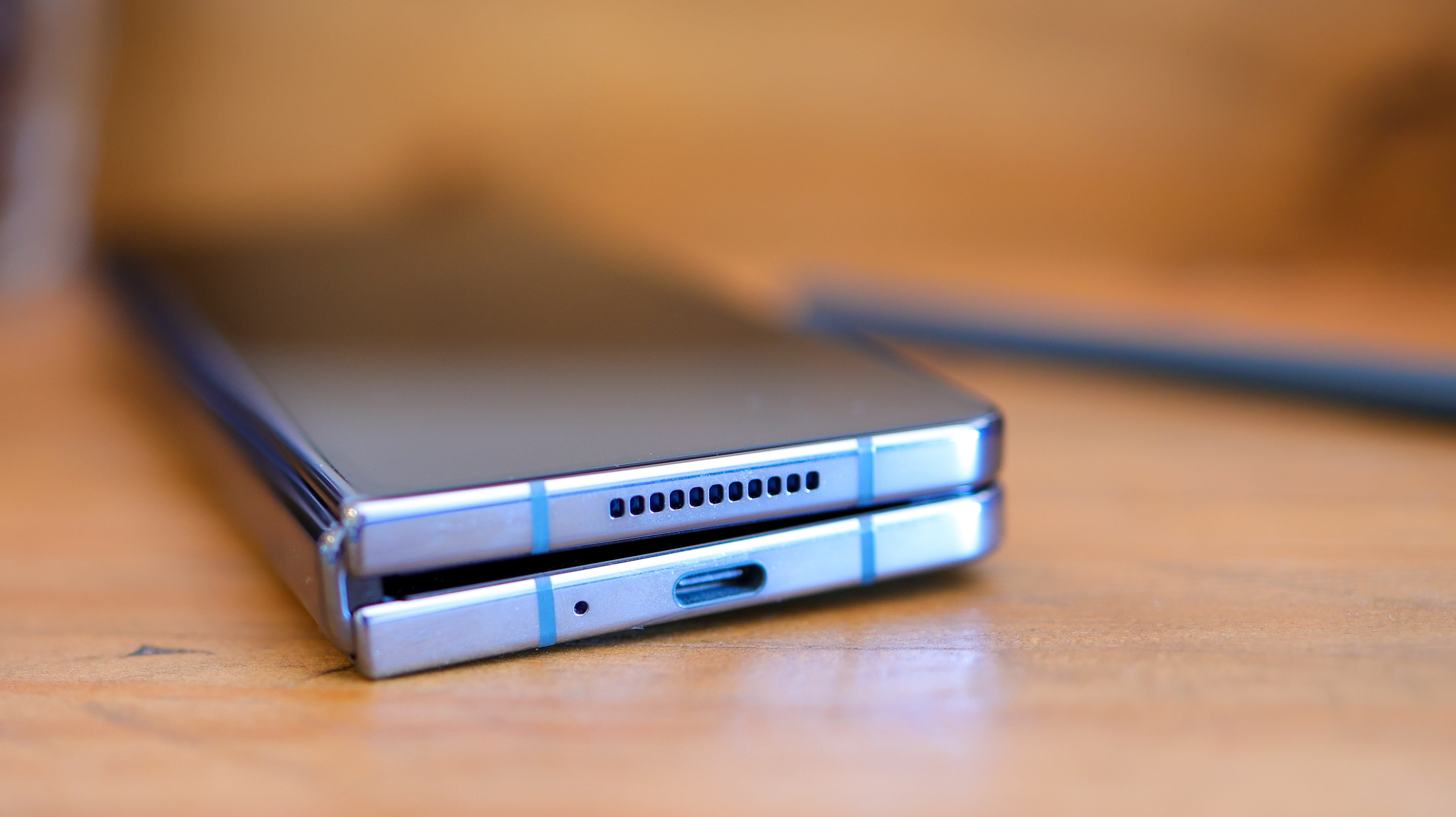
So Samsung hasn't made a magical machine that can morph from a miniature smartphone into an expansive tablet, but the Z Fold 4 is still a mighty mix of design highlights. On the front, it has a 6.2-inch cover display, while inside, the main screen is a 7.6-inch, relatively square flexible screen.
When opened up, at the base is a loudspeaker and USB-C port, on the right is a fingerprint scanner and power button combo as well as a volume rocker, and up top is the second speaker. There's a triple camera at the back, and across both screens are two selfie cameras, an under-display camera on the main screen, and a traditional punch hole front camera in the cover screen.
Made from Samsung's own Armour Aluminum and Gorilla Glass Victus Plus, both introduced on the Galaxy S22 series, the line's bodies have had an on-paper durability bump, and in two full weeks with the phone, it remains free of dings and boops.
That isn't to say the Z Fold 4's flexible display isn't more fragile than a traditional one. If you bash it, it will likely discolor – but as a package, this is probably the most life-proof foldable around.
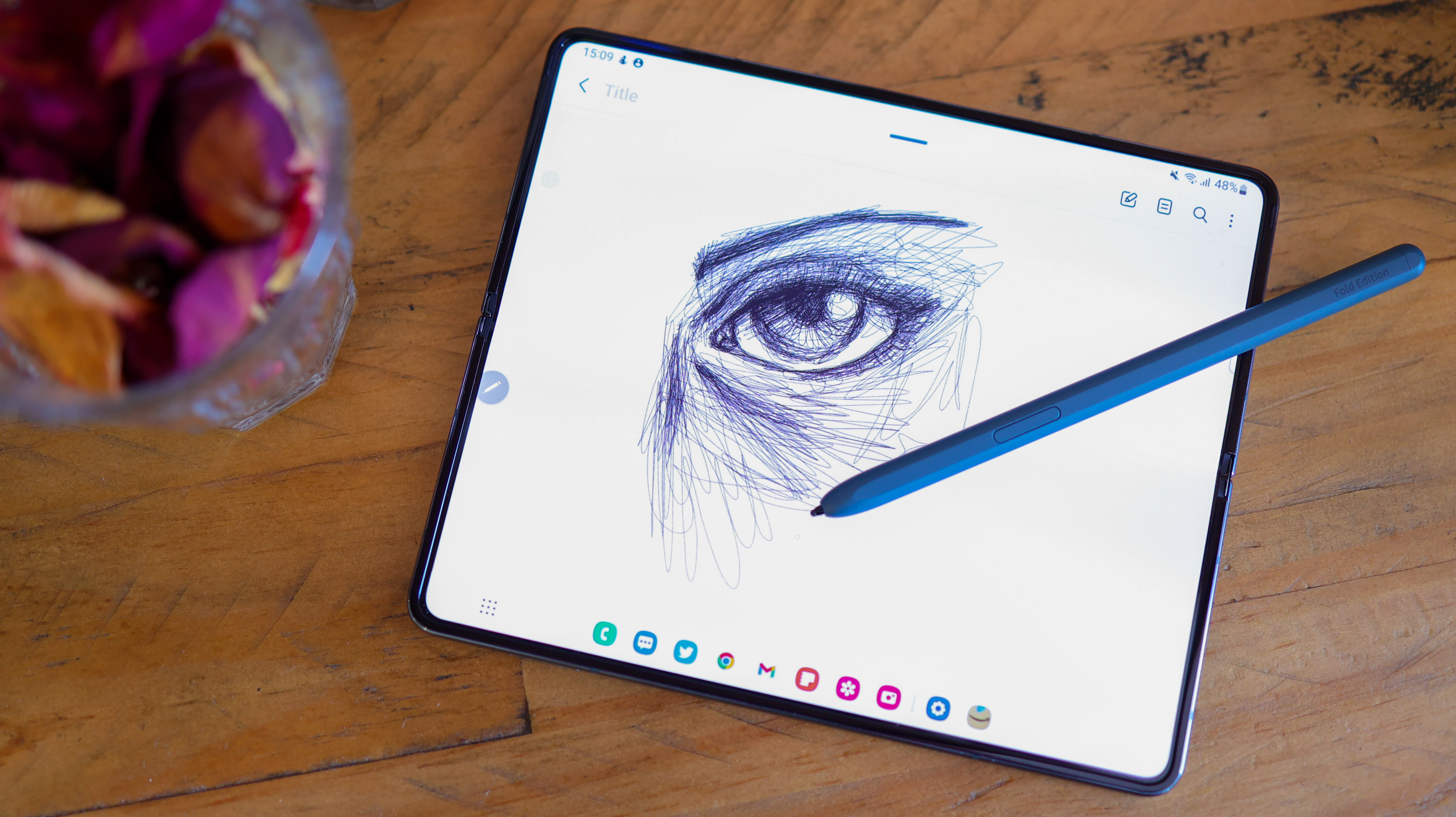
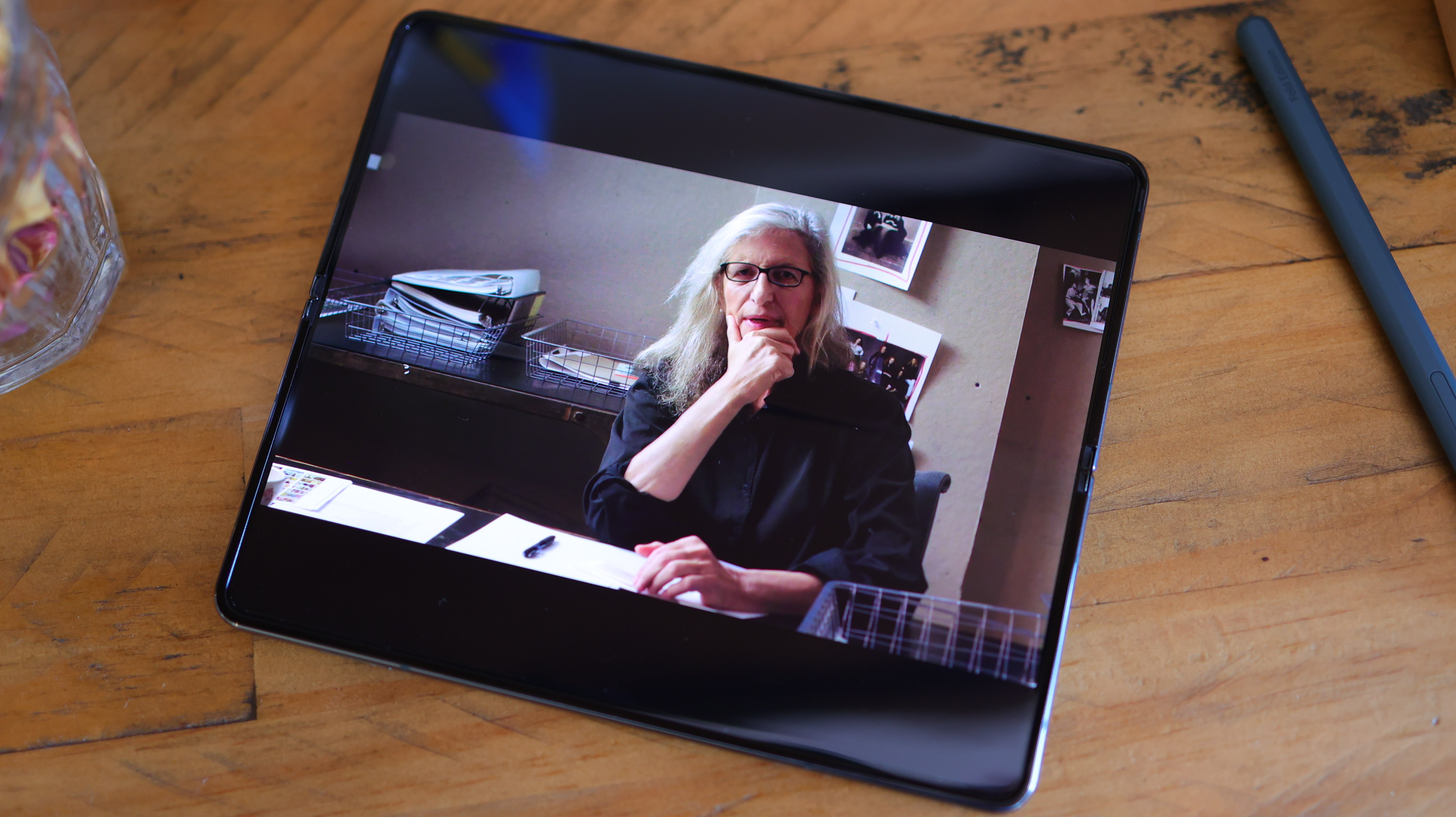

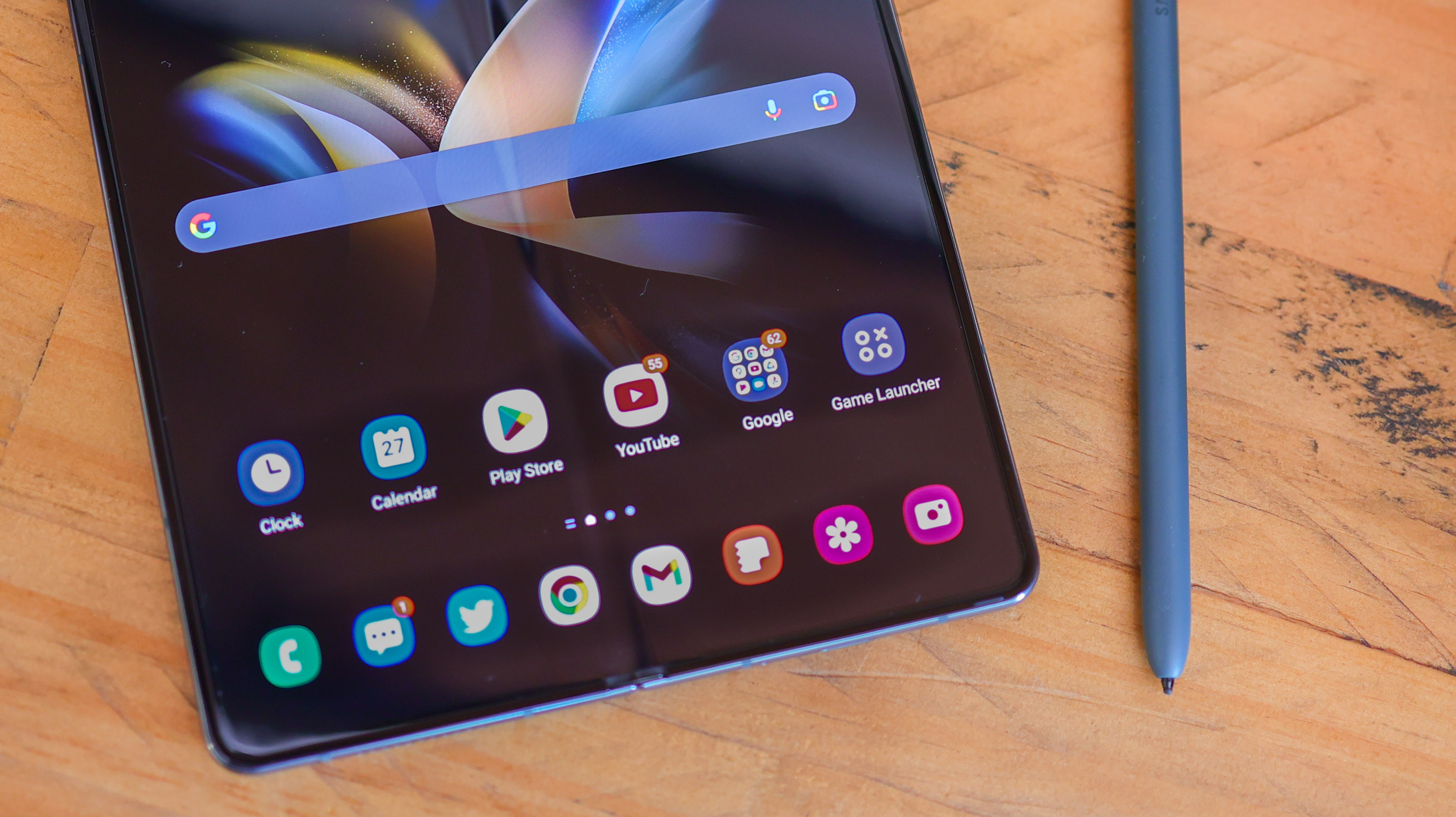
As for the screens, their dimensions have been slightly refreshed, despite being the same size on paper as those of the Z Fold 3's. Both are a little wider and a little shorter, which results in the whole phone being a touch more squat.
Whichever screen you use, you'll be looking at a Dynamic AMOLED display with a 120Hz refresh rate and a pixel density of above 380 pixels-per-inch – sharp enough for all but the most discerning pixel-peeper.
The inner screen has a crease down the middle, and the sooner you get used to that, the more you'll enjoy the whole Z Fold 4 experience – while it didn't phase us, there's no getting around the fact it is very noticeable.
While we thought we'd benefit from the unfolding, large, 7.6-inch tablet display most out and about, we actually found ourselves using it more at home. It works brilliantly with the Readly or DC Comics Infinite apps – perfect for kicking back for a chill on the couch with a magazine.
The foldable's square aspect ratio is also brilliant for playing back older, 4:3 videos – from Full Metal Alchemist to The Golden Girls. For newer 16:9 or 21:9 video, it's still well suited when half-folded in Flex Mode – which pushes content to the top half of the screen, or when using the front display.
Unlike most HDR smartphone screens, the Samsung Galaxy Z Fold 4 is also Netflix HDR compatible, so supports a broad dynamic range across screens, and generally speaking, whether watching, swiping, or reading, both the cover and tablet display looked very good.
The one caveat to the Fold 4's dual-screen excellence is bright sunlight and smudges. The tablet display looks very smudgy compared to glass after you've been using it for a few days, with the top coat on the folding screen holding onto fingerprints more than traditional displays. This can impair viewability in bright environments in particular, so a cleaning cloth will be a must if you want the best from the Z Fold 4.
Samsung Galaxy Z Fold 4 camera specs
The Z Fold 4 has seen a boost in camera hardware when compared to the Z Fold 3. The rear cameras are almost identical to those of the Galaxy S22 and S22 Plus, with a wide, ultra-wide, and three times telephoto camera mix.
This upgrade also means a larger main camera sensor, up from 1/1.76 inches to 1/1.56 inches – a welcome upgrade. Samsung opts for its own 50MP S5KGN3 sensor, which is matched with an f/1.8 lens, a 23mm wide-angle, and phase detection autofocus (PDAF).
While there's no periscope zoom camera, unlike the Vivo X Fold, there is a bit more reach this time around when compared to the Z Fold 3. The telephoto gets a 10 MP Samsung S5K3K1 sensor which clocks in at 1/3.94 inches, producing a 1-micron pixel size. As for the optics, there's an f/2.4 lens with a 66mm focal length, PDAF, and OIS.
Onto the ultra-wide, and this is where the Z Fold 4 falls behind the S22 line, with its Sony IMX258, a 13MP sensor that captures 12MP images on the Fold 4. The small sensor is matched with an f/2.2 aperture and has a 123˚ field of view, which equates to a 12mm focal length.


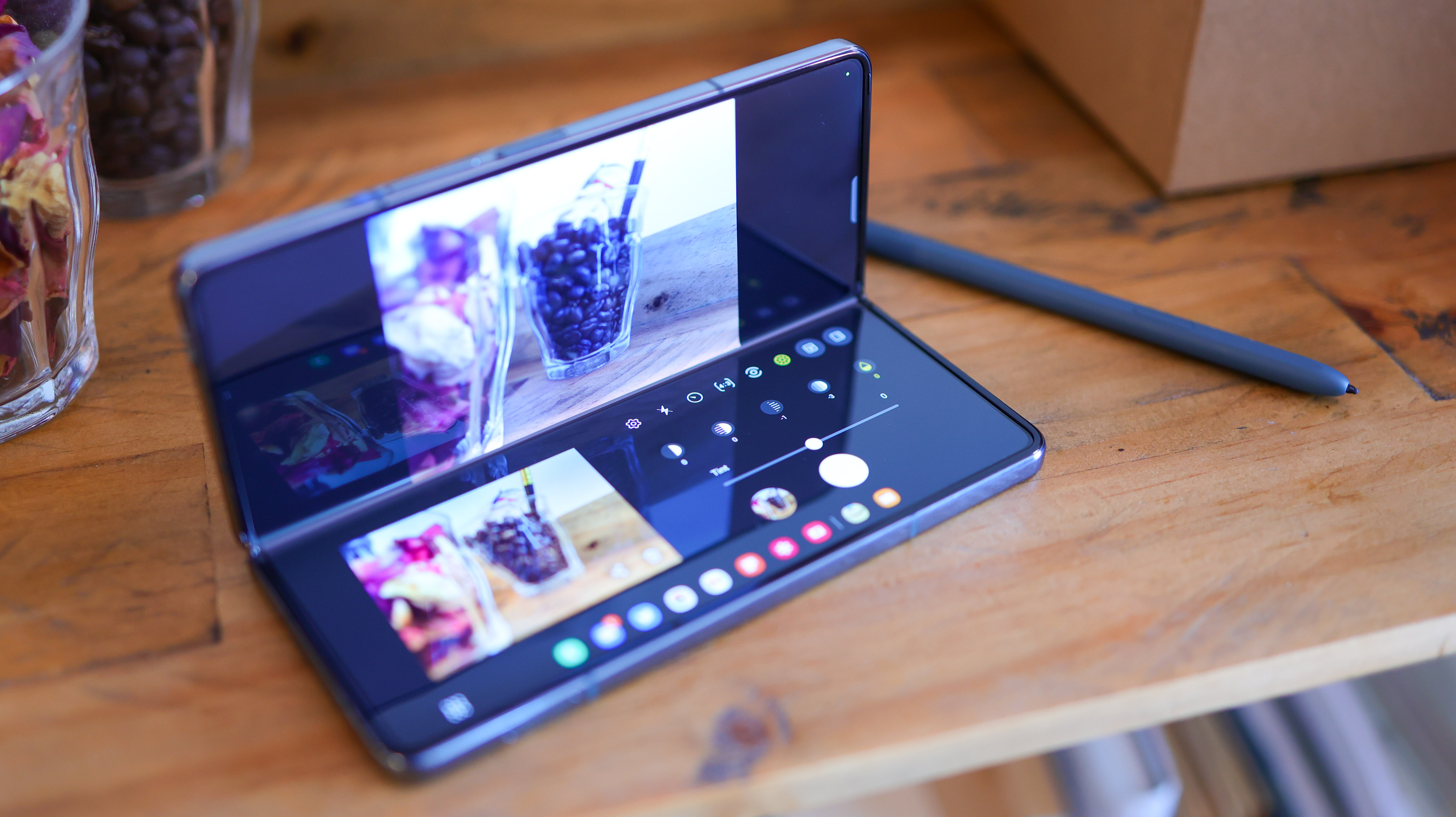

Shooting modes include Portrait, Photo, Video, Pro, Pro Video, Single Take, Night, Food Panorama, Super Slow-Mo, Slow Motion, Hyperlapse, Portrait Video, and Director's View.
The camera takes advantage of the phone's Flex Mode, so when the Fold 4 is half-folded, the top half of the screen acts as a viewfinder, while the bottom half serves up your shooting controls. This is especially handy in Director's View, which previews all three focal lengths on the secondary display, so you can make an informed decision when you switch out. Pro Mode also really benefits from a split-screen view, with the top half of the foldable clear for your picture, and the bottom half displaying manual shooting options.
The Z Fold 4 captures videos at up to 8K resolution at 24fps, and 4K at up to 60fps, and if you're shooting in Pro Mode, manual ISO can be set as high as 3200, and the shutter speed up to 30 seconds.
Samsung Galaxy Z Fold 4 camera review
Despite not being the best camera phone of 2022, the Galaxy Z Fold 4 is a much better one than the Z Fold 3, thanks to its upgraded main camera and extra telephoto reach.
Starting with the main 50MP snapper, and the Fold's a great point-and-shoot camera. Good at freezing time in the right light, while still capturing ample detail and a balanced picture, most will like the warm, vibrant shots it takes.
Samsung is known for its sharpened, lively shots, and the Z Fold 4's images are true to form. They look clean and sharp out of the camera, ready for Instagram or WhatsApp, but miss out on the broad dynamic range you get from phones like the Xiaomi 12 Pro and Xiaomi 12, which lean a bit more heavily on computational photography, pulling detail out of highlights and shadows.
The primary camera is quick to focus and take a photo, and can capture them with a relatively shallow depth of field when close to a subject.
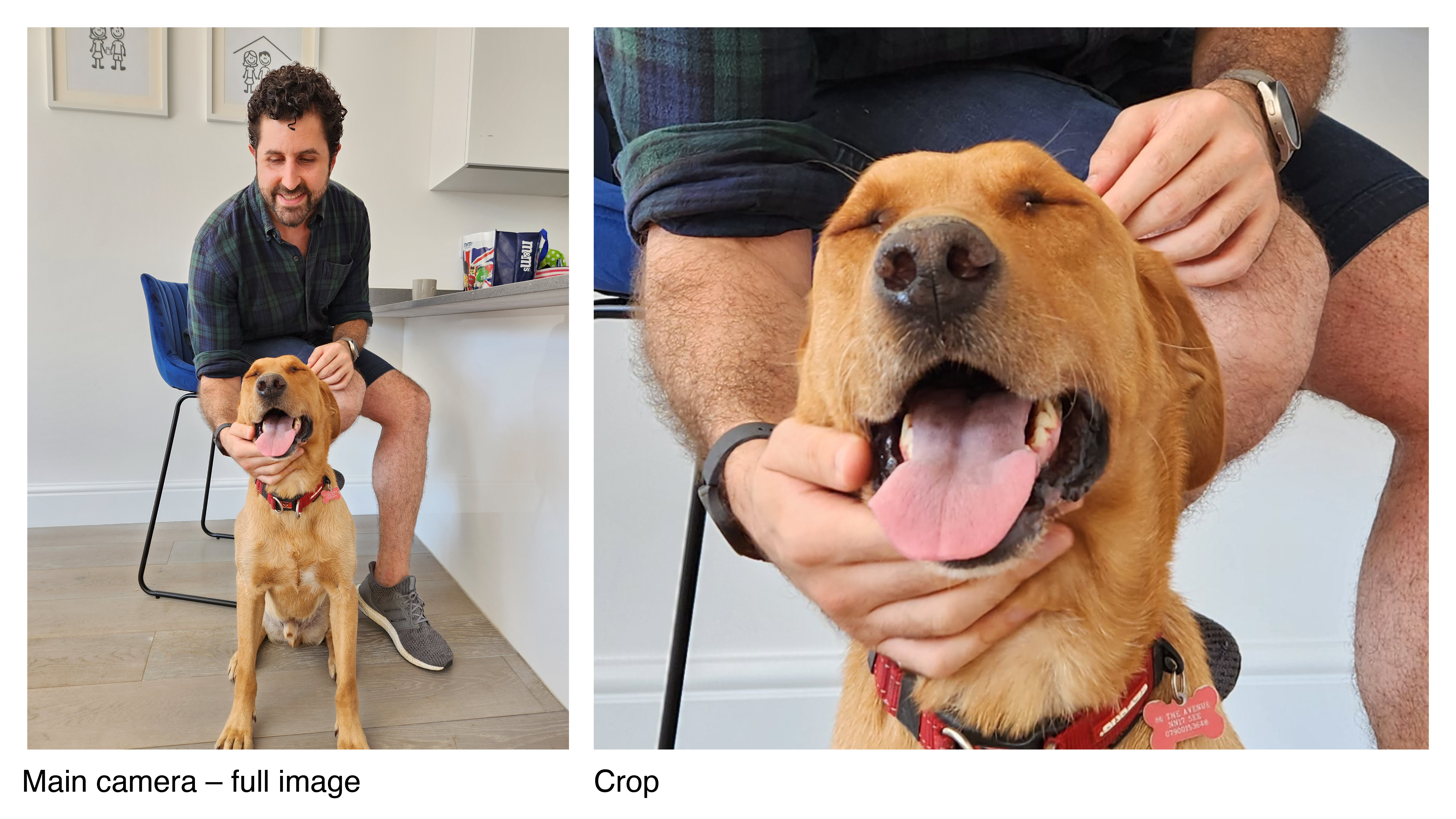
Anyone who edits their pictures heavily, the Z Fold 4's default shots won't give you as much wiggle room as some other phones. Contrast is high, shadow detail is middling, and sharpening is ramped up. That said, the phone's Pro Mode and RAW capture really help here.
Expert RAW, available through the Galaxy Apps store, is a turbo-charged RAW camera and a great option for enthusiasts. This captures higher dynamic range RAW photos likely through bracketing and other computational photography, and with the new camera sensor combined with the Flex Mode, which can hold the Z Fold 4 steady on a surface, it makes RAW photos loaded with tonal information and detail possible.

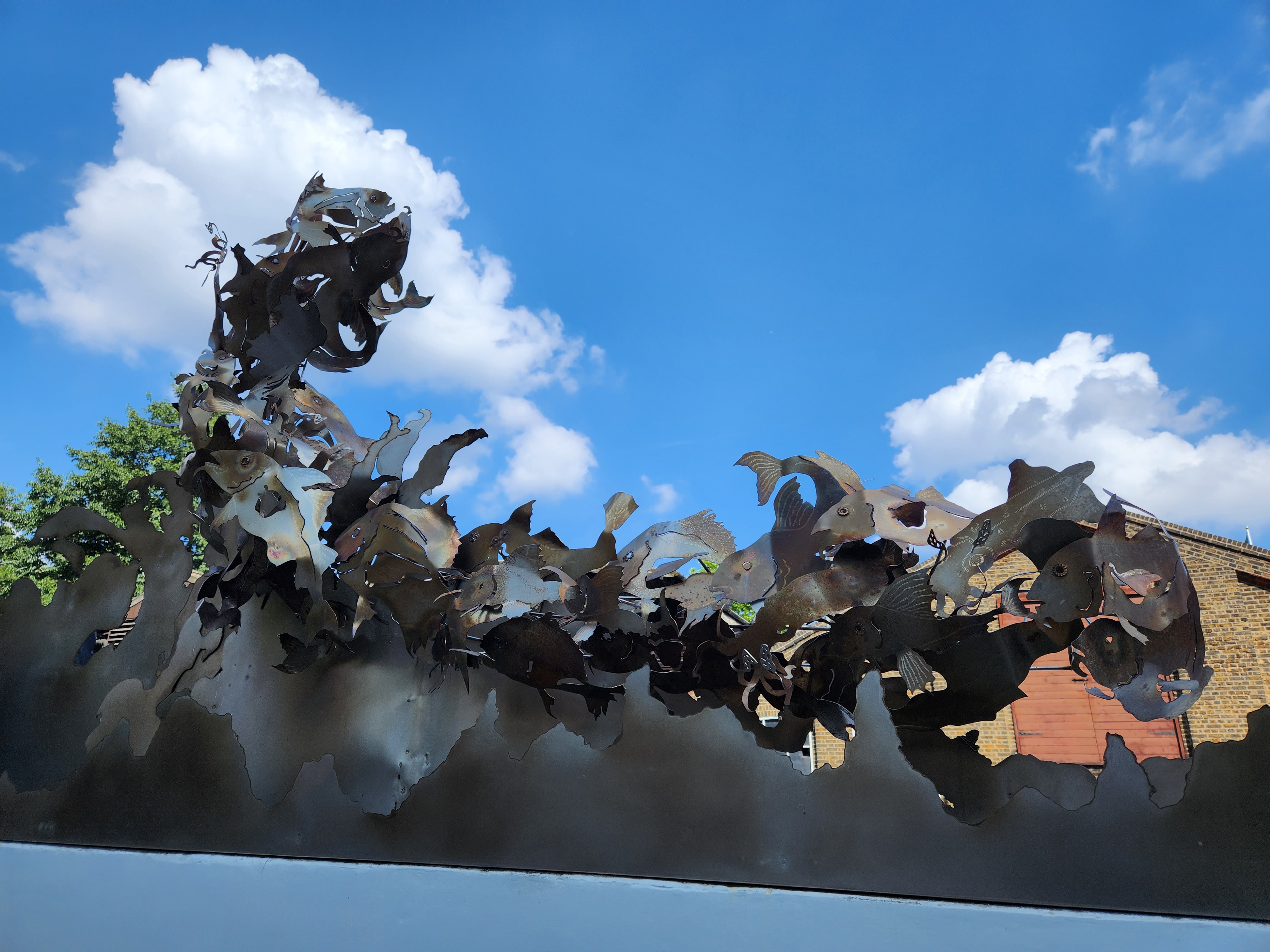




All three cameras benefit from Samsung's updated photography software, so photos shot in daylight have auto HDR applied, and photos taken at night fire up Night Mode automatically. This creates a reliable triple camera mix that works across lighting conditions. You can see examples of the three focal lengths above, with photos taken in both daytime and at night.
Once again, Expert RAW really does come to the rescue here, if you're an enthusiast who wants to eke a bit more out of the occasionally clumsy secondary cameras, it's supported across the ultra-wide and telephoto too for impressive RAW capture across all three.
The Galaxy Z Fold 4's selfie cameras are an interesting mix – on the front is a 10MP traditional selfie camera with an f/2.2 lens and a 24mm wide angle. This should be your go-to option. Inside, beneath the cover display, a hidden 4MP under-display camera resides. This isn't as good as the 10MP camera, struggling in lowlight. Even in good light, it captures flatter, less rich selfies, so Samsung positions it as a video calling camera, and we'd agree.
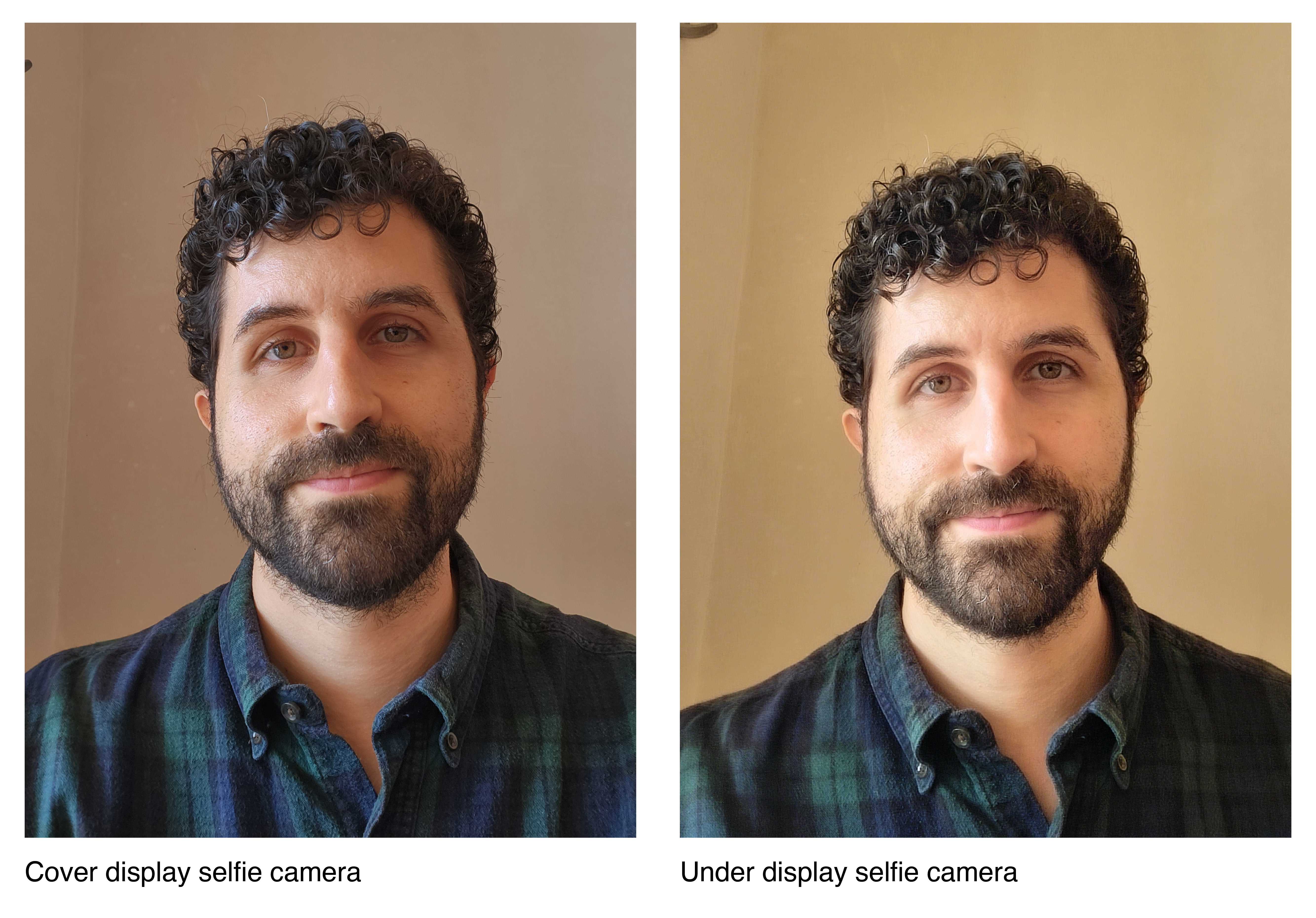
You can also take selfies using the Galaxy Z Fold 4's camera, firing up the front camera, then selecting the cover display icon. This prompts you to open up the Fold 4, and use the cover screen as a preview for the main camera. Unsurprisingly, the quality of these photos is excellent.
Video captured on the Fold 4 is stabilized all the way up to 8K resolution, though the sweet spot really is Full HD, given the fact it's steadied better and seems to capture superior dynamic range. That said, in well-lit environments and with your phone steadied on a surface, 4K 60fps or 8K 30fps still deliver footage that's easier to crop into.
Camera samples


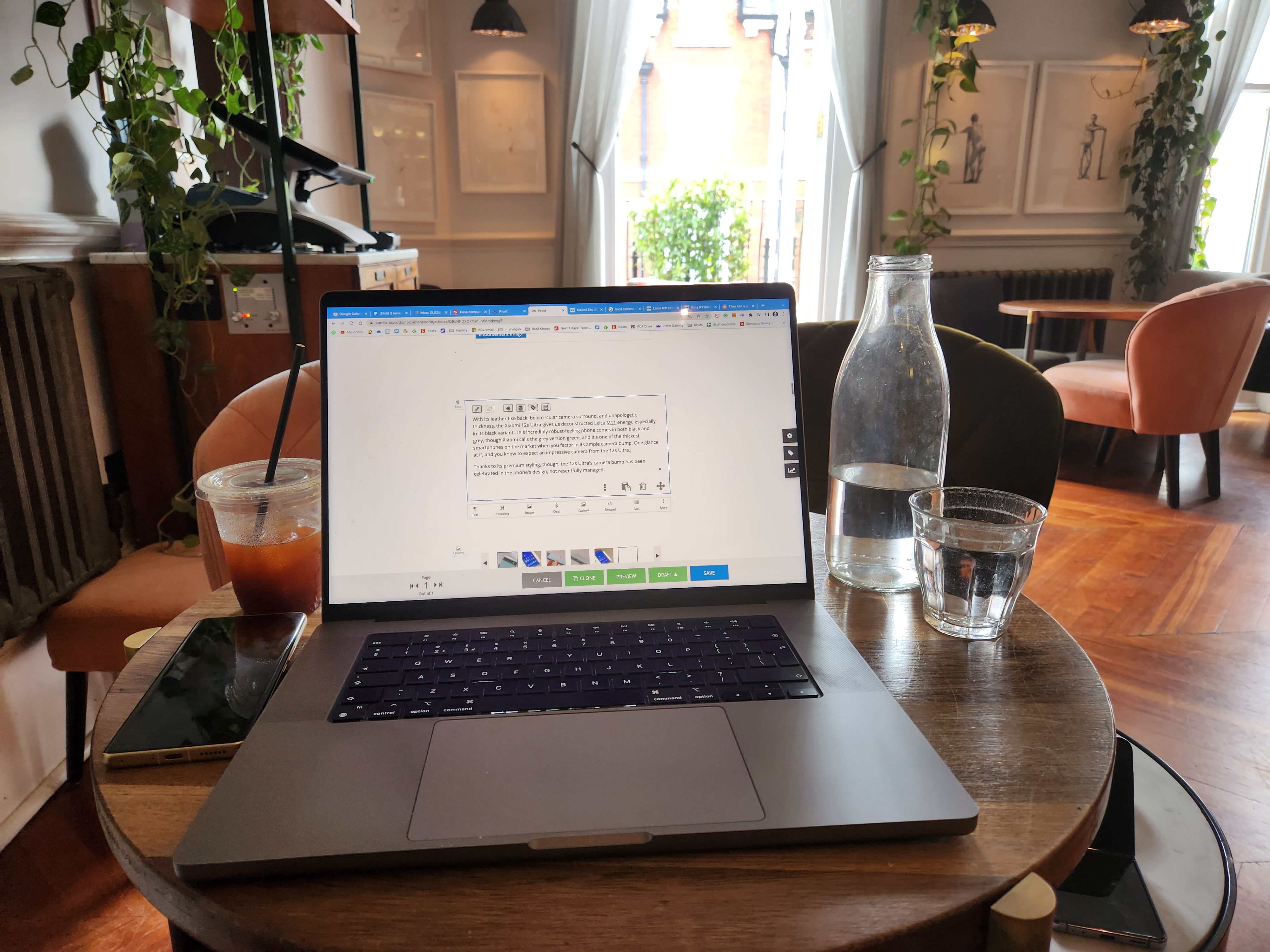
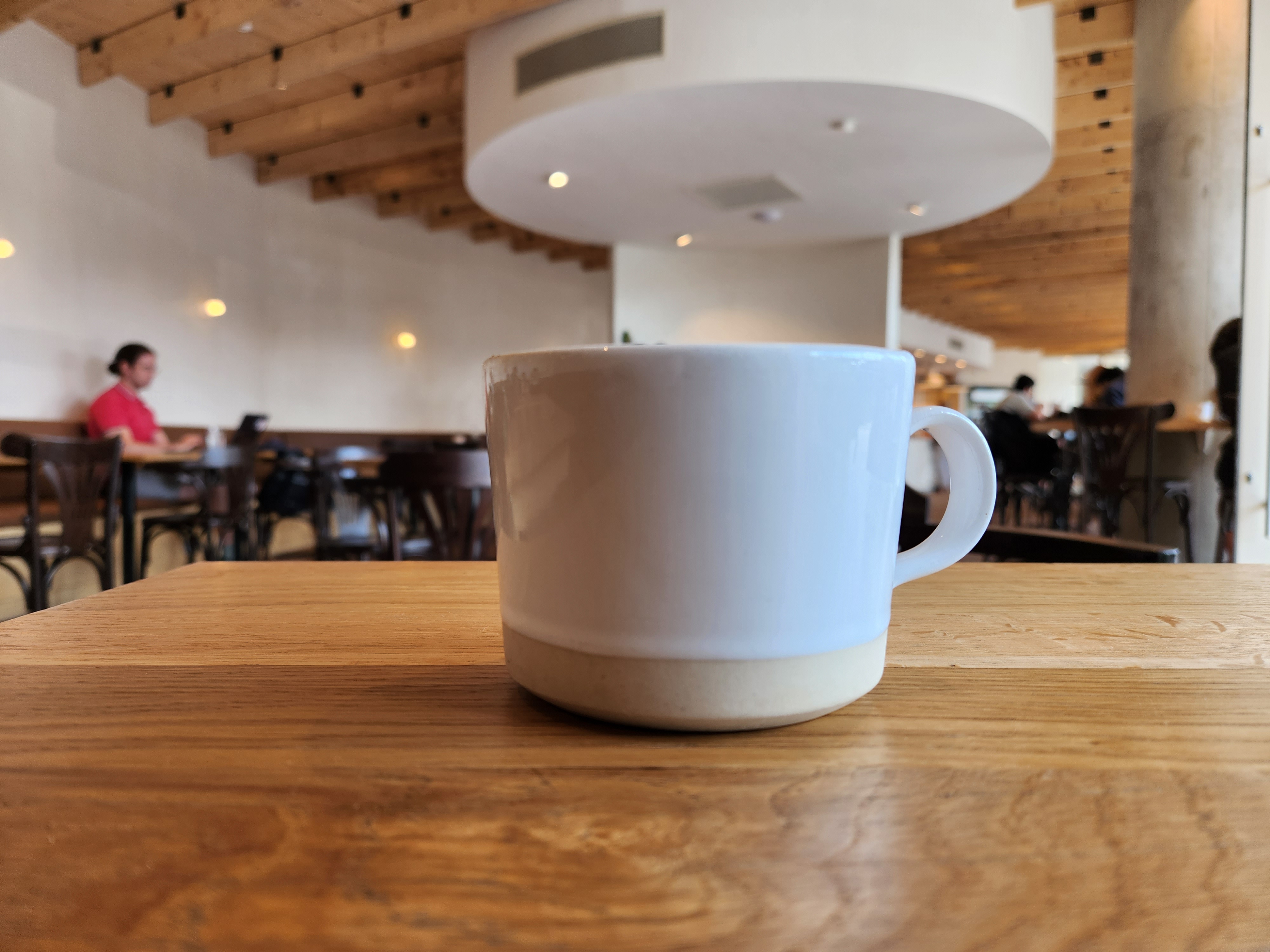
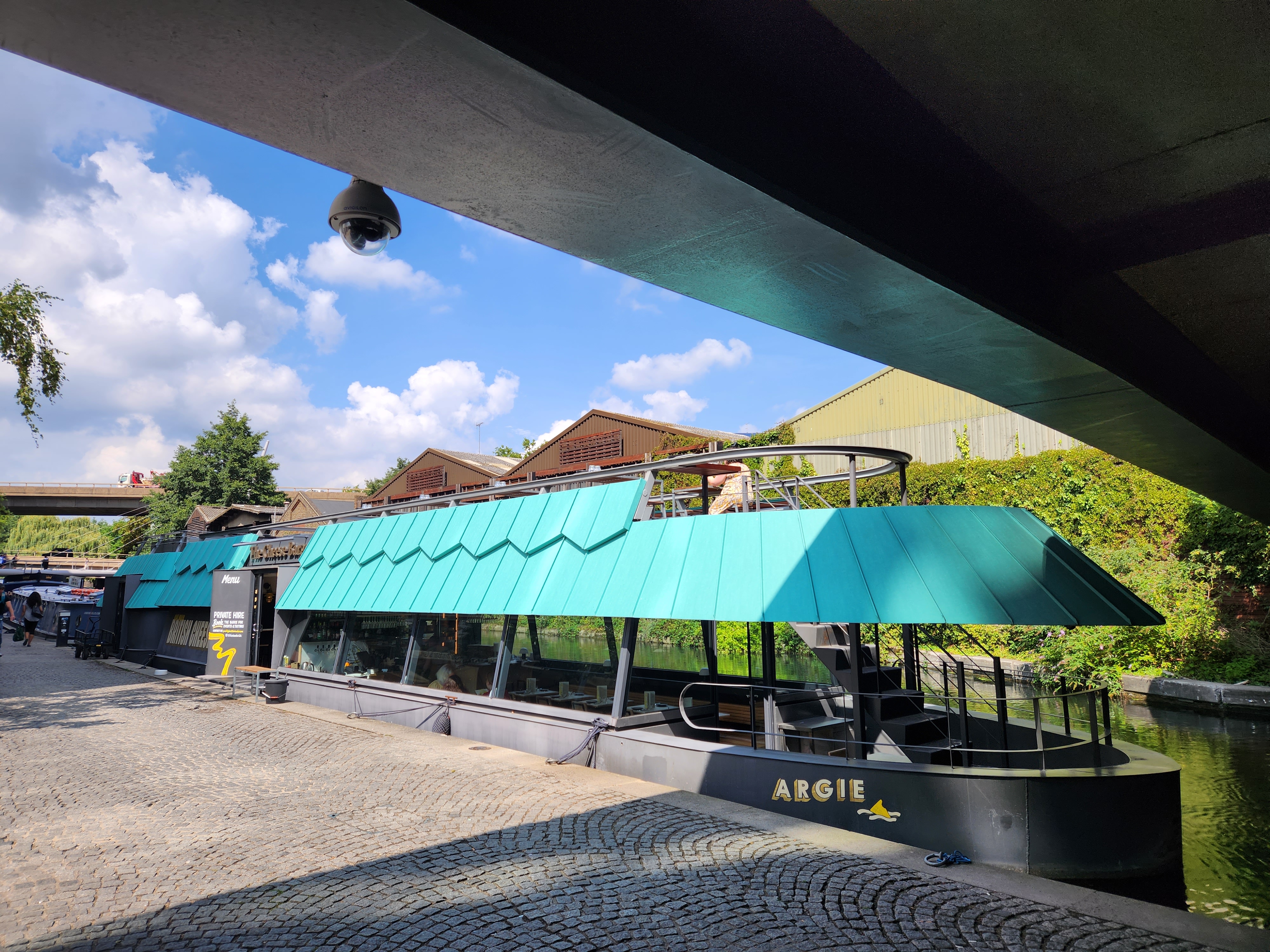
Samsung Galaxy Z Fold 4 performance
With a 4500mAh battery, the Samsung Galaxy Z Fold 4 falls behind flagships like the Oppo Find X5 Pro when it comes to capacity, but has the same sized cell the Z Fold 3 had. With its smaller cover display and larger surface area – better for heat dissipation, it still lasted a relatively comfortable day with regular use. Charging isn't too quick, peaking at 25W wired and 15W wireless, but we were able to fully charge it in less than 90 minutes using a fast charger which isn't too bad.
The only day we struggled with battery life was when we gamed on it for long periods, and spent a lot of time in the sun, firing up that maximum screen brightness. Speaking of gaming, with Snapdragon 8+ Gen 1 power, the Fold 4 is the most powerful foldable on the market along with the new Xiaomi Mix Fold 2.
Unlike the Mix Fold 2, Samsung's foldables come loaded with the Google Play Store, which means excellent app support out of the box for Western markets. Samsung's a bit heavy-handed with its pre-loaded apps and features, with its OneIU interface on top of Android packing a tonne of functionality, and a fair bit of bloat.
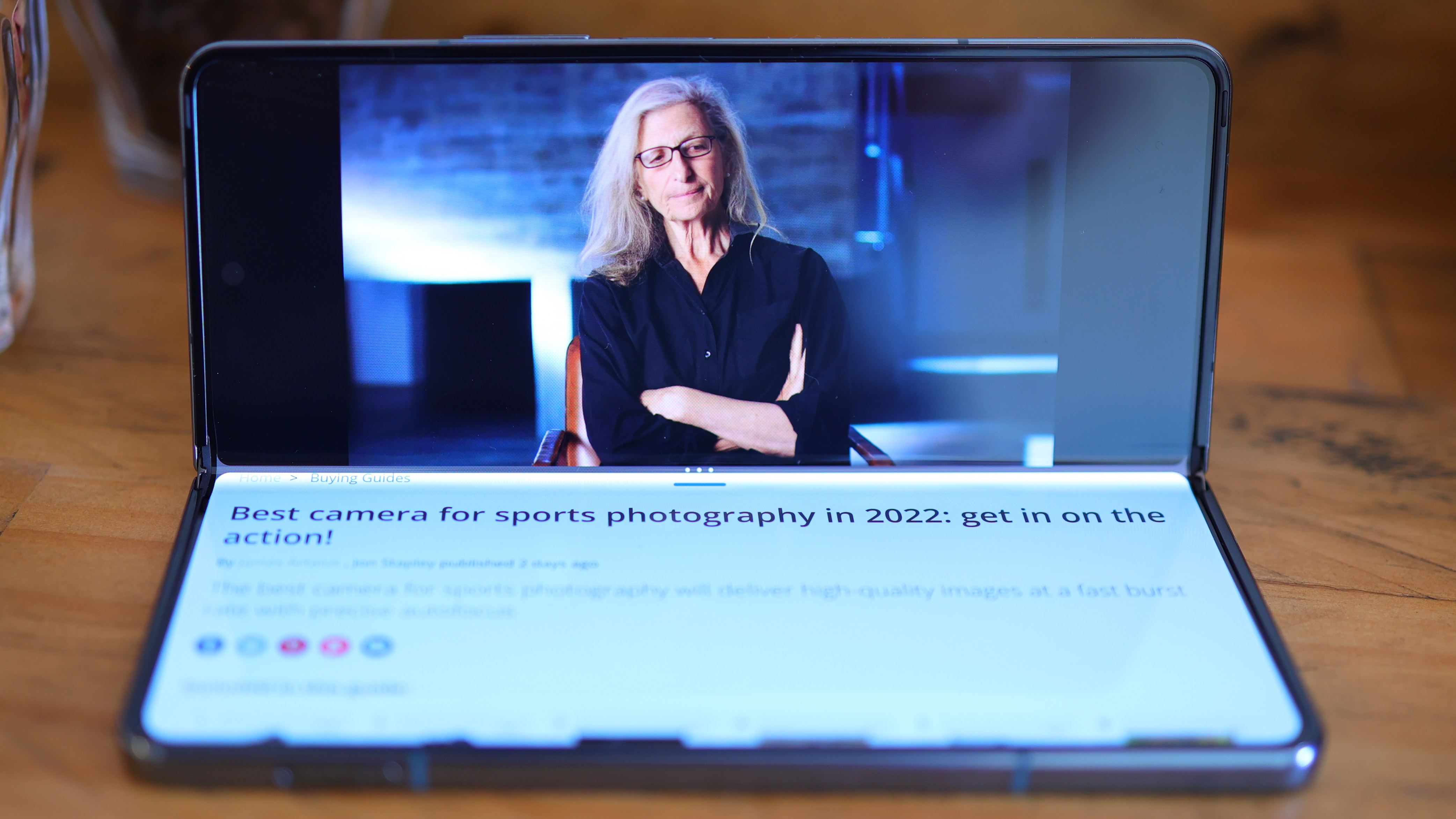
The new feature Samsung's included on the Fold 4 that's grabbed the most attention is the Taskbar – a strip of eight apps that lives on the bottom of the unfolded main display, as well as two recent app shortcuts. That means quick access to up to 10 apps, and you can also drag apps into a split screen mode from the Taskbar, making for easier access to multitasking.
Flex Mode is also a great feature. Half-fold the phone, and the UI will either push your content into the top half of the screen, or a little icon will appear, prompting you to choose how that app is handled when the phone's half-folded. You can choose to leave the phone working in full-screen as standard, or it can use half the screen for your app, and the other half of the screen for tools – brightness, volume, screenshot, and even a trackpad.
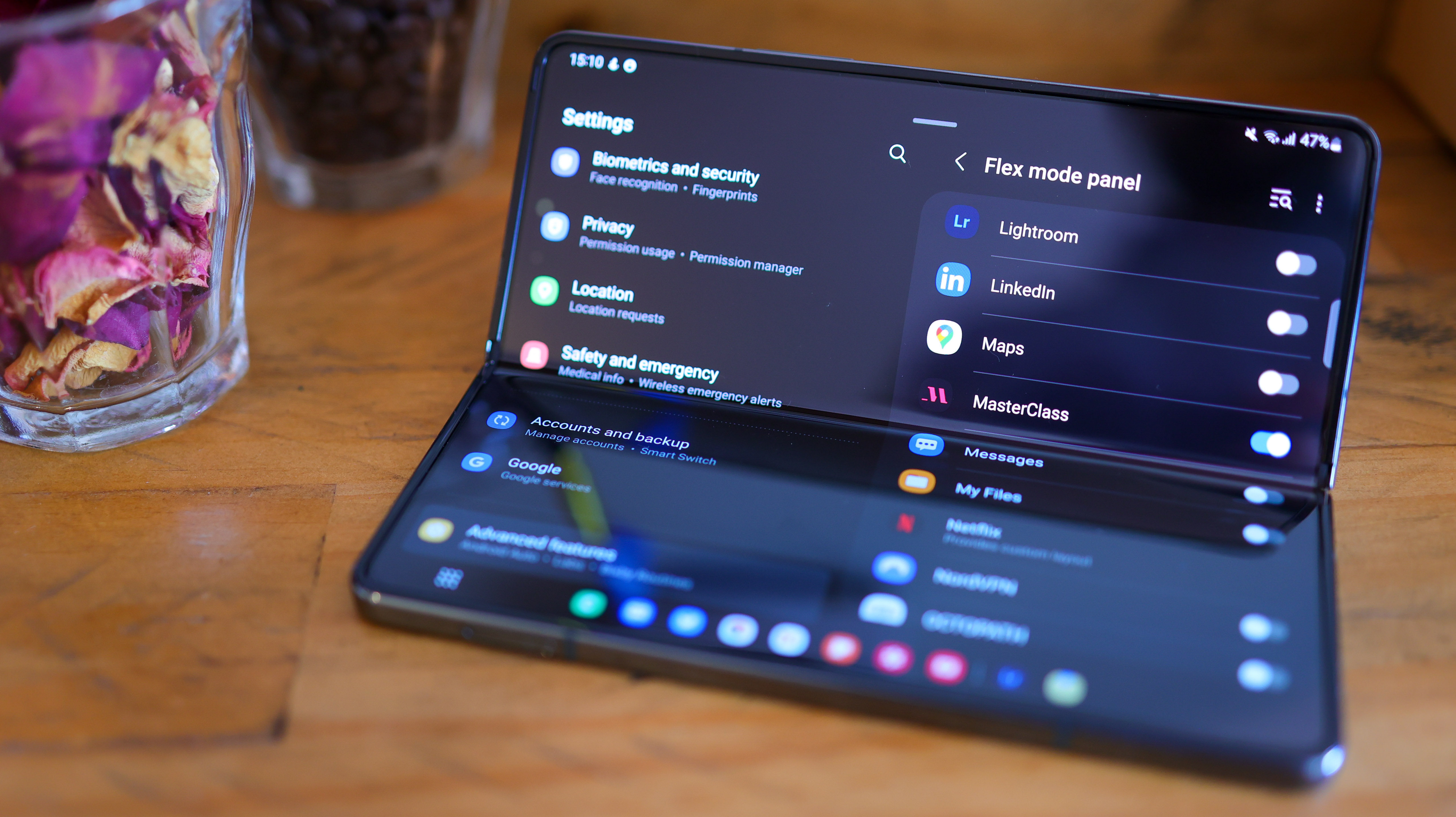
With S Pen input support, the Z Fold 4 is the only foldable (other than the Fold 3) that works with a dedicated stylus. The screen has 4,096 levels of pressure sensitivity, and when matched with an S Pen Pro or an S Pen Fold Edition, you can turn the inner display into a notebook. While the crease detracts slightly from the experience – no one wants to write on a lumpy canvas, it's excellent to have a feature that really makes use of the larger screen other than a split-screen view, which is the standard foldable highlight.
The S Pen isn't just great for notetakers, it's also excellent for masking in apps like Lightroom. And matched with the Z Fold 4's large, 7.6-inch screen, photographers who enjoy a bit of on-the-go editing will love it.
The Samsung Galaxy Z Fold 4 doesn't feature expandable storage, though it's available with a starting capacity of 256GB, and that can be bumped up to 512GB or 1TB. Whichever capacity you go for, it's matched with 12GB RAM, and up to an additional 8GB of dynamic RAM, which Samsung terms RAM Plus.
Verdict
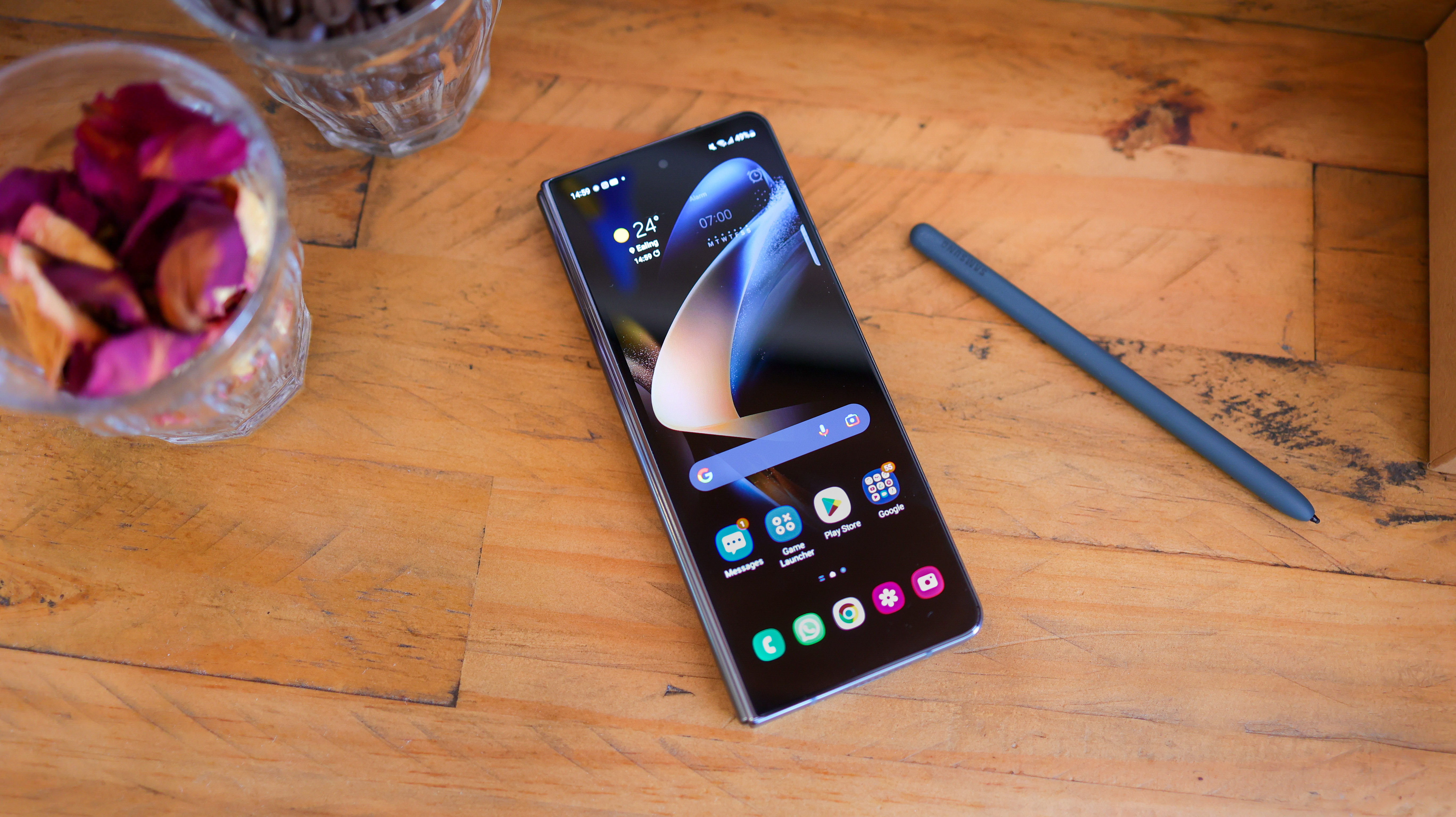
Foldables are still prohibitively expensive, and most people who have their heart set on one will probably opt for the Galaxy Z Flip 4 over the Fold 4 – but the Z Fold 4 is a more powerful system, especially for photographers.
Starting with the cameras, they're improved over the Z Fold 3, and Samsung's camera software has also gotten better too. So while we aren't blown away by the Z Fold 4's automatic mode – it's good, but nothing special, especially given the phone's price, its manual modes and Expert RAW features are excellent. This is especially true when matched with Flex Mode, for some super-steady shooting.
The rest of the phone is premium across the board. The design seems robust and durable – not as slimline as the Xiaomi Mix Fold 2, but definitely hardier-feeling. IPX8 water resistance is also a great boon for Samsung's folding phones, and the Z Fold 4's hinge, which locks at almost any point across the 180º rotation, is also very impressive. The competition's foldables (available in China) spring open or closed, by contrast, preventing them from working with a Flex Mode style interface.
Add S Pen support and decent battery life to the mix, and the Galaxy Z Fold 4 is a mighty smartphone and foldable. Of course, we would have loved better camera hardware, but given how much better the photography experience is year-on-year, and how useful the Z Fold 4's big screen is for third-party photography apps, it's still a great choice.
In fact, the Galaxy Z Fold 4 makes an interesting argument – the best phone for photographers might not be the one with the best camera hardware. Instead, it might be the best companion to your existing camera, the one that can slot into your workflow and run those apps you rely on – potentially, the Galaxy Z Fold 4.
Read more
Best Samsung phones
Best camera phones
Best budget phones
Basil Kronfli is a freelance technology journalist, consultant, and content creator. He trained in graphic design and started his career at Canon Europe before moving into journalism. Basil is also experienced in video production, independently running the YouTube channel TechEdit, and during his time at Future, he worked alongside the Digital Camera World team as a senior video producer.



